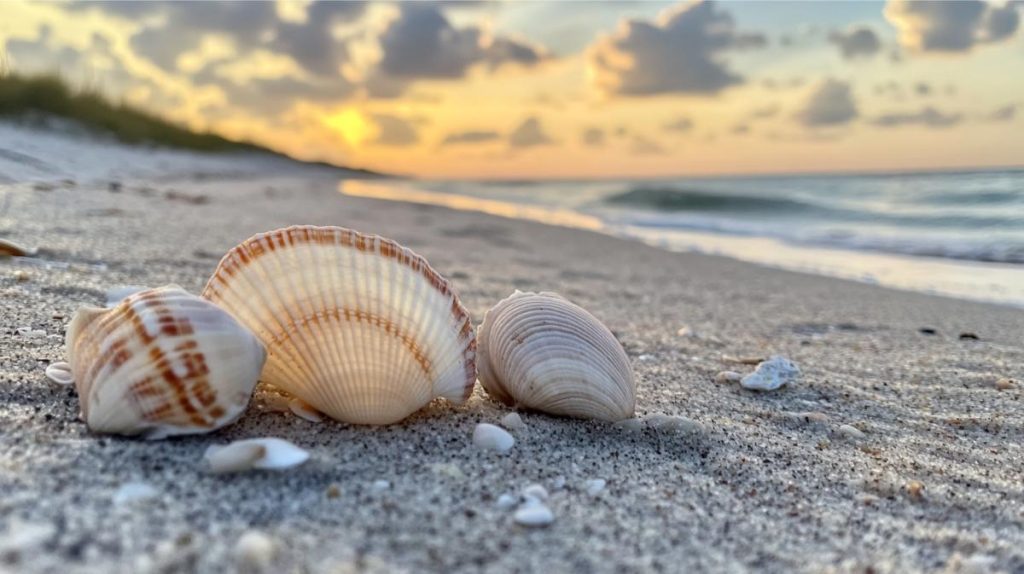The world’s oceans are changing fast. As carbon dioxide levels rise, seawater becomes more acidic. This shift is bad news for many sea creatures.
Ocean acidification is pushing some marine species to the brink of extinction.
You might wonder how this happens. When CO2 dissolves in water, it forms carbonic acid. This process makes the ocean more acidic over time.
Many sea animals rely on calcium carbonate to build their shells and skeletons. As the water gets more acidic, it’s harder for them to do this. Some marine life faces a two-fold challenge – less calcium carbonate and more acid.
Think of the ocean as a big, bubbly soda. As it gets more fizzy (acidic), the tiny bubbles can hurt delicate sea life. From tiny plankton to big coral reefs, many creatures are feeling the sting.
This change ripples up the food chain, affecting fish, whales, and even the seafood on your plate.
Key Takeaways
- Ocean acidification makes it harder for many sea creatures to build shells and skeletons.
- The effects of acidification can impact the entire marine food web.
- Reducing carbon dioxide emissions is key to slowing ocean acidification.
The Science Behind Ocean Acidification

Ocean acidification is a complex process driven by rising carbon dioxide levels. It’s changing the chemistry of our seas and impacting marine life in profound ways.
Let’s dive into the science behind this pressing issue.
Understanding PH and Carbon Dioxide
You’ve probably heard of pH in chemistry class, but did you know it’s crucial for ocean life? pH measures how acidic or basic a solution is. The ocean’s pH has been dropping, making it more acidic. This is because of carbon dioxide (CO2) from the air dissolving in seawater.
When CO2 meets H2O, they form carbonic acid. This acid releases hydrogen ions, lowering the water’s pH. It’s like adding lemon juice to your water – it gets a bit tangy!
Ocean acidification is causing big changes in the ocean’s carbonate chemistry. This affects how marine creatures build their shells and skeletons.
From Fossil Fuels to Acidic Oceans
You might wonder how burning fossil fuels leads to acidic oceans. Well, it’s all connected! When we burn oil, gas, or coal, we release CO2 into the air. The ocean, being the good sport it is, absorbs about a third of this extra CO2.
But the ocean’s hospitality comes at a cost. As more CO2 dissolves, the seawater becomes more acidic. It’s like the ocean is throwing a party, but the uninvited guest (CO2) is ruining the fun for everyone else!
This process has been speeding up since the Industrial Revolution. The ocean’s pH has dropped by about 0.1 units, which might not sound like much, but remember – the pH scale is logarithmic. That 0.1 drop actually means a 30% increase in acidity!
Marine Life on a Chemical Carousel
Imagine you’re a tiny sea creature trying to build your shell. Suddenly, the water around you starts changing. That’s what’s happening to many marine organisms due to ocean acidification.
Many sea critters use calcium carbonate to build their homes (shells and skeletons). But as the water gets more acidic, it’s harder for them to find the building blocks they need. It’s like trying to build a sandcastle when the tide keeps washing away your sand!
Some marine life might adapt, but others are struggling. Coral reefs, oysters, and tiny plankton are especially at risk. And when these creatures suffer, it affects the whole ocean food web – from the tiniest shrimp to the biggest whales.
Ripple Effects in Our Seas

Ocean acidification is causing big changes in our seas. It’s like a domino effect, impacting everything from tiny plankton to big fish.
Let’s look at how this affects different sea creatures and the ocean as a whole.
The Plight of Shell Builders
You might not think much about tiny sea creatures with shells, but they’re in trouble. As the ocean gets more acidic, it’s harder for them to build their homes.
Imagine trying to build a sandcastle when the sand keeps washing away. That’s what it’s like for oysters, clams, and sea urchins in acidic waters. Their shells get thinner and weaker.
This isn’t just bad news for the shell-dwellers. These little guys are food for bigger sea creatures. If they disappear, the whole ocean food chain could crumble.
Fin-Tastic Fish and Their Futures
You might think fish would be okay since they don’t have shells, but they’re not off the hook. Acidic water messes with their senses.
It’s like trying to find your way home with a stuffy nose and foggy glasses. Fish have trouble:
- Smelling their food
- Avoiding predators
- Finding their way around
Some fish are tougher than others. But many are struggling to adapt fast enough. This could mean fewer fish for us to eat and enjoy watching in the future.
The Balancing Act of Biodiversity
Ocean acidification is like a big bully, pushing some sea creatures out of their homes. As some species struggle, others might take over their spot.
You could see:
- Fewer colorful coral reefs
- More slimy algae
- Changes in what fish live where
This shake-up affects the whole ocean ecosystem. It’s like a game of Jenga. Pull out the wrong piece, and the whole thing could come crashing down.
But it’s not all doom and gloom. Some sea creatures are finding ways to cope.
Scientists are working hard to understand these changes. They also want to find ways to help our oceans stay healthy and diverse.
